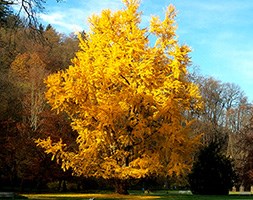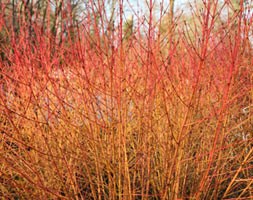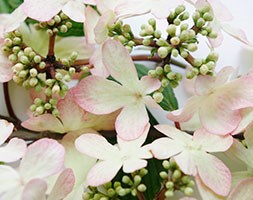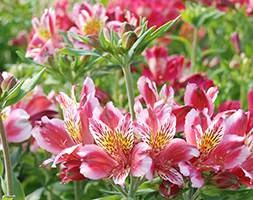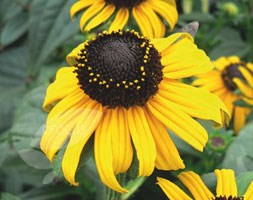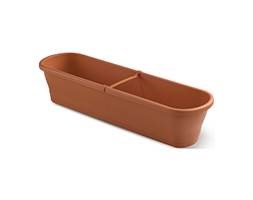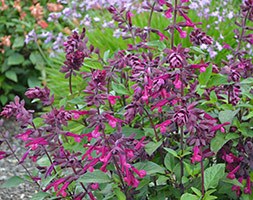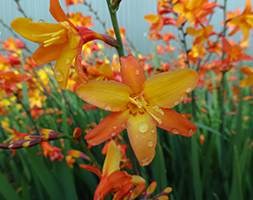New products at Crocus
by Sarah - September 19th, 2015.Filed under: Crocus, New Products.
Crocus just added these new items
Ginkgo biloba (maidenhair tree) £69.99
Position: sun Soil: fertile, well-drained soil Rate of growth: slow-growing Flowering period: April to May Hardiness: fully hardy This wonderful, ancient tree from China dates back at least 200 million years. Its distinctive, fan-shaped, bright green leaves turn bright gold when a warm a utumn follows a warm summer. Mature male trees have thick, yellow catkins in la te spring. This tree usually starts life shaped like a flagpole but gradually b ecomes wide spreading. It can cope with many city conditions, including polluti on, and makes an elegant tree for a larger garden. Maidenhair trees were introduced to Japan about 1,000 years ago and often grown near temples – one reason why they are a common feature in Japanese-style gardens. The first maidenhair tree was brought to Britain and planted in Kew Gardens i n 1760. It still stands today. Garden care: Requires minimal pruning. Remove any broken, diseased or crossing branches in late autumn or winter. When planting incorporate lots of well-rotted garden compost in the planting hole and stake firmly.
Cornus sanguinea ‘Midwinter Fire’ (dogwood) £49.99
Position: full sun to part shade Soil: any moderately fertile soil Rate of growth: fast-growing Flowering period: June Hardiness: fully hardy This deciduous shrub has oval, mid-green leaves and produces small, creamy-white flowers in May and June. But it’s really grown for the brilliant, flame-coloured stems that are revealed when the leaves, which turn orange-yellow in autumn, fall. This fabulous dogwood looks best planted in groups in damp areas of the garden, beside water, or in a winter border. One of our recommended plants, it’s best in full sun, and works particularly well with red or purple-stemmed varieties of dogwood. Garden care: For best stem colour, cut the stems back hard to within 5-7cm (2-3in) from the ground in March and apply a generous 5-7cm (2-3in) mulch of well-rotted garden compost or horse manure around the base of the plant.
Viburnum plicatum f. tomentosum ‘Kilimanjaro Sunrise’ (RHS Chelsea Flower Show Plant of the Year 2015) £34.99
Position: full sun or partial shade Soil: moderately fertile, moist, well-drained soil Rate of growth: average Flowering period: May to June Hardiness: fully hardy Very pretty, white flushed pink lacecap-like flowers appear on the tiered branches of this conical, deciduous shrub in early summer. More upright in habit than the species, it is perfect for the shrub border where space is at a premium. In autumn the leaves will take on good fiery colours before they fall providing another season of interest. Garden care: Keep the pruning of young plants to a minimum. Any vertical shoots that threaten to spoil the distinctive tiered shape of established plants should be cut back to their point of origin in summer after flowering.
Alstroemeria ‘Sedna’ (alstroemeria) £24.99
Position: full sun or partial shade Soil: fertile, moist, well-drained soil Rate of growth: slow growing to average Flowering period: June and July Other features: excellent cut flowers; contact with the foliage may cause skin irritation Hardiness: fully hardy Garden care: Alstroemerias will need some protection in their first year or two, so only plant out when all danger of frost has passed. Set the bare roots out carefully onto well-prepared soil, or if planting into pots, use a good, multi-purpose compost. The plant will grow from the rhizome, not the fleshy storage bulb, so it is important that any bud on the rhizome is pointing upwards before being covered with 7 – 8cm (3″) soil. Ideally they should be placed at 30 – 45cm intervals. Keep the soil moist whilst the plant starts to grow and develop, which should be in spring. Newly planted Alstroemerias should be given a very generous 20cm (8″) deep mulch of chipped bark in their first winter to help the plants become established. In subsequent autumns, provide a dry mulch of bracken or bark chippings will help protect the crowns. After flowering cut back the faded flower-stems, but make sure you always wear gloves when working with Peruvian lilies, as contact with the foliage may cause skin irritation.
Rhododendron ‘Cosmopolitan ‘ (hybrid rhododendron) £24.99
Position: partial shade Soil: moist, well-drained, humus-rich, acid soil or ericaceous compost Rate of growth: average Flowering period: May and June Flower colour: pink Other features: evergreen Hardiness: fully hardy Ravishing rounded trusses of pale-pink, funnel-shaped flowers with a deep red flare in late spring and early summer and glossy, dark green leaves. The flowers of this bushy, evergreen rhododendron gradually fade to light pink. Neat and dense in habit it makes an attractive all-year plant for a shrub border with humus-rich, acid soil. Garden care: Avoid planting too deeply. Apply a generous 5-7cm (2-3in) mulch of leaf mould around the base of the plant each spring.
Rudbeckia fulgida ‘Early Bird Gold’ (PBR) (black-eyed Susan) £9.99
Position: full sun or partial shade Soil: moderately fertile, preferably heavy but well-drained soil Rate of growth: average Flowering period: June to October Flower colour: orange-yellow Other features: toothed, mid-green leaves; excellent, long lasting cut-flowers Hardiness: fully hardy A breakthrough in breeding has resulted in this wonderful new plant, which will start to flower up to 2 months earlier than its parent R. Goldsturm. It has only been on the American market (where it was first discovered by a grower in Plaquemine, Louisiana) for a couple of years, and this year (2011) it is making its debut throughout Europe. We have managed to secure some of the first plants to reach our shores, so naturally we are quite excited about it all. The most intriguing thing about this new variant is that it is not dependent on the length of the day to induce flowering. Therefore it is possible for it to start flowering in early summer and not finish until mid to late autumn – an impressive feat I’m sure you will agree! Garden care: Lift and divide congested colonies in autumn or spring. Support with ring stakes or brushwood well before the flowers appear.
Corsica 2 in 1 trough £9.99
The Corsica collection of planters has been developed to provide your balcony with elegance. The design blends with a wide range of plants to create an eye – catching display on either your balcony, or even on a wall. Pots come with a stabiliser, which ensures that the planter keeps its shape once filled. Available in a range of colours. Measurements: Height: 17cm Diameter: 23cm x 60cm Capacity: 14 litres
Saliva Love and Wishes = ‘Serendip6’ (PBR) (salvia) £6.99
Position: full sun to lightly dappled shade Soil: humus-rich, well-drained soil Rate of growth: average Flowering period: July to October Hardiness: frost hardy (may need winter protection) The third in the ‘Wish’ series of salvias, this new addition has jaw-dropping magenta flowers, each held by a dark burgundy calyx. Also, if the plant is deadheaded regularly, the flowers will appear over an incredibly long period – often providing colour from June to November. It has a neat an tidy habit too, which makes it great for both borders and pots, and once well established, it will become tolerant of drought. Garden care: To prolong flowering remove the flower spikes as soon they start to fade. Apply a generous 5-7cm (2-3in) mulch of well-rotted garden compost or manure around the base of the plant in spring.
Crocosmia Orange Pekeo = ‘Pek Or’ (PBR) (montbretia) £6.99
Position: full sun or partial shade Soil: moderately fertile, humus-rich, well-drained soil Rate of growth: average to fast-growing Flowering period: July to September Hardiness: frost hardy (needs winter protection in cold areas) The flaring trumpet-shaped flowers of this new montbretia are a lush mix of yellow and orange, with a reddish flush to the outer edges of the petals. They appear in profusion (particularly if grown in a sunny spot) over several months from midsummer, and they will give borders and pots a bold blast of colour. Its a strong grower and the flowers can be cut and added to the vase. Garden care: Resist removing the faded foliage in autumn and cover the crown of the plant with bracken or bark chips to protect the plant against frost damage. Lift and divide congested colonies in spring, planting the divided sections 8-10cm (3-4in) deep.







